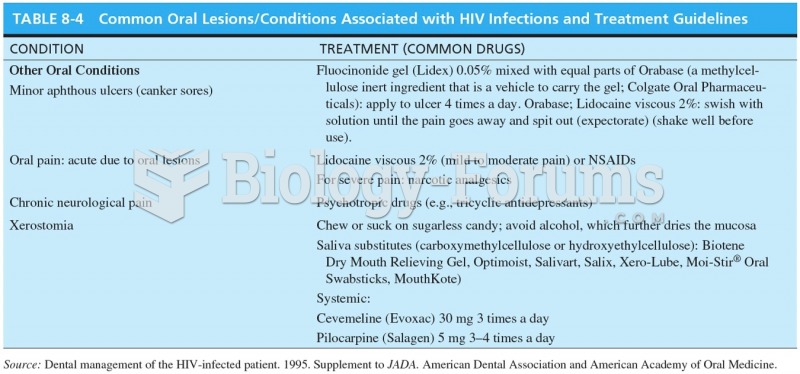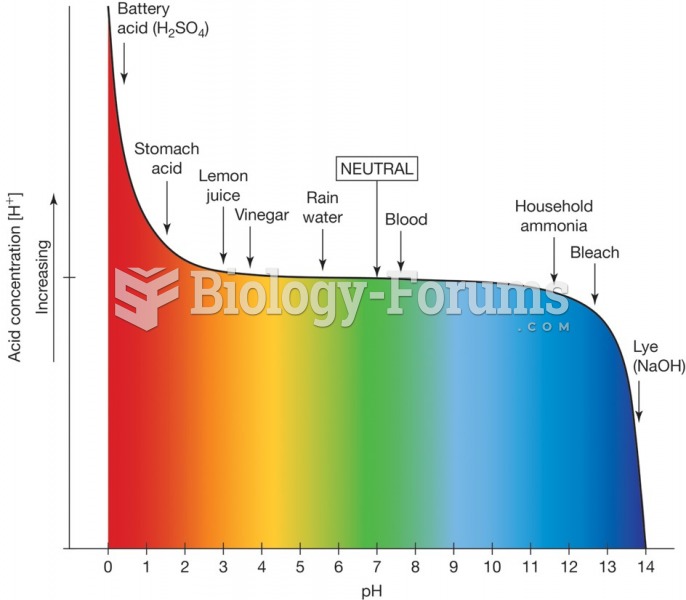|
|
|
Excessive alcohol use costs the country approximately $235 billion every year.
A seasonal flu vaccine is the best way to reduce the chances you will get seasonal influenza and spread it to others.
Pubic lice (crabs) are usually spread through sexual contact. You cannot catch them by using a public toilet.
The most dangerous mercury compound, dimethyl mercury, is so toxic that even a few microliters spilled on the skin can cause death. Mercury has been shown to accumulate in higher amounts in the following types of fish than other types: swordfish, shark, mackerel, tilefish, crab, and tuna.
A recent study has found that following a diet rich in berries may slow down the aging process of the brain. This diet apparently helps to keep dopamine levels much higher than are seen in normal individuals who do not eat berries as a regular part of their diet as they enter their later years.







